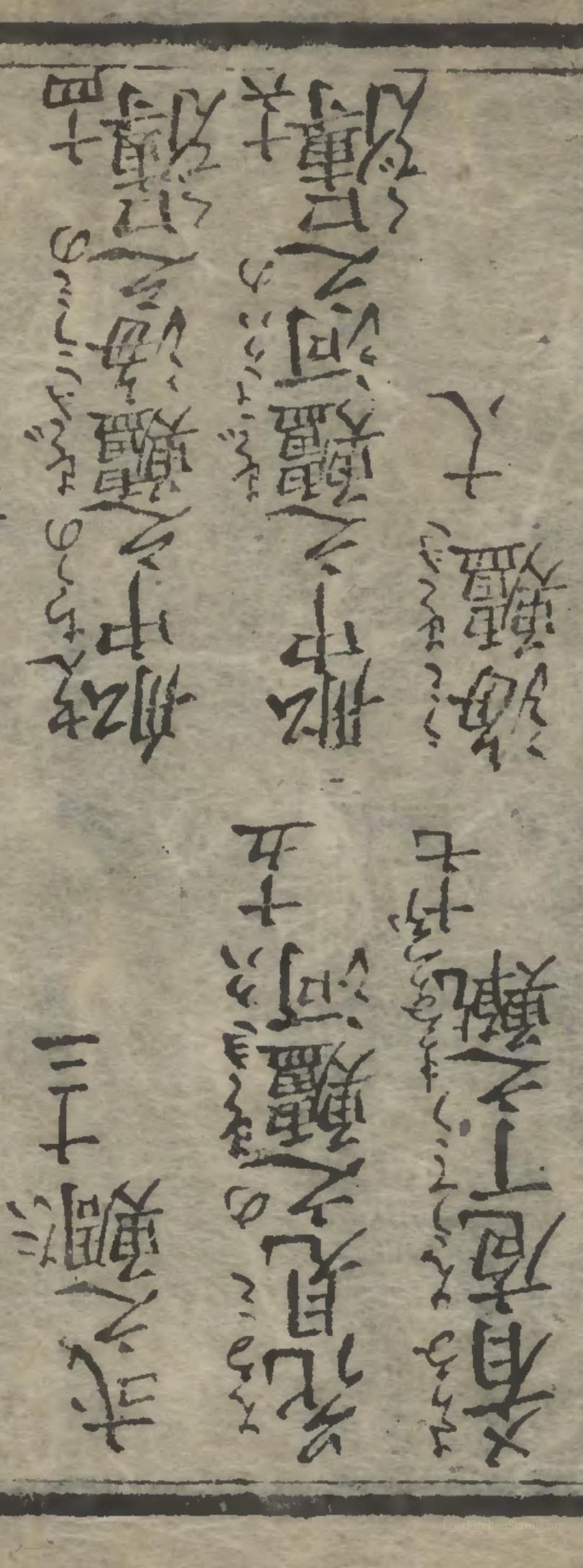一、百合根酒煮
"Lily Bulb Stewed In Sake"
From the treasured pages of Ryōri shitsuke hō
Unknown Author

一、百合根酒煮
"是は百合根を五ツにわり、かわをむき、水にてよくあらひ、酒二合、塩一さじ、水少々にて煮る、又花がつおこして入、汁のへり様を見て、又さし水をして、やわらかになるほど煮る、吸口三ッ葉よし"
English Translation
"First, divide the lily bulbs into five pieces, peel them, and wash thoroughly in water. Simmer them with two cups of sake, a teaspoon of salt, and a little water. Add a handful of katsuobushi (dried bonito flakes). Watch for the reduction of the broth and add more water if needed, simmering until soft. Garnish with mitsuba (Japanese wild parsley) as a finishing touch."
Note on the Original Text
The recipe is written in the succinct, almost telegraphic prose typical of Edo-period cookbooks. Quantities are noted with simple terms like '二合' (two gō, about 360 ml) for sake and approximations for salt, assuming the cook's practical judgement and experience with ingredient textures and doneness. Directions are process-focused: '煮る' (to simmer), 'さし水' (add water), extolling the importance of watching liquid reduction rather than prescribing times or temperatures. Historical spellings retain classical Japanese grammar and kanji usage, with a preference for essential information; flower garnishes like '三ッ葉' (mitsuba) are mentioned as desirable ('よし'), leaving creativity to the cook. No instructions for plating or specific sequencing are given—an indication that these cookbooks served as memory triggers or guidance for trained kitchen professionals rather than absolute step-by-step tutorials.

Title
Ryōri shitsuke hō (1642)
You can also click the book image above to peruse the original tome
Writer
Unknown
Era
1642
Publisher
Nakamura Juemon
Background
A culinary gem from early Edo-period Japan, this block-printed manual serves up a fascinating glimpse into the art and etiquette of Japanese cooking, guiding readers through refined techniques and traditional recipes that delighted 17th-century palates.
Kindly made available by
Library of Congress
This lily bulb simmered in sake (百合根酒煮) hails from the Kan'ei era (1642), representing a time when skilled cooks compiled recipes to educate and train household staff and aspiring culinary professionals. The text, 'Ryōri shitsuke hō,' was a practical manual, reflecting the everyday techniques and preferred flavors of well-off Japanese households during the Edo period. Subtly flavored simmered dishes were prized as an expression of both refinement and seasonal awareness, with lily bulbs symbolizing purity and good fortune. This recipe was included in a rare block-printed cookbook collection, a luxury object intended for instructing cooks, but also for recording elite culinary knowledge for future generations. The inclusion of sake and katsuobushi showcases the sophisticated seasoning techniques unique to traditional Japanese cuisine.

In 17th-century Japan, the preparation would have involved a well-sharpened vegetable knife for peeling and splitting the lily bulbs, and an urushi (lacquered) or ceramic pot for simmering gently over a charcoal brazier or open hearth. Water would have been drawn from a well and sake measured out with wooden measures. Katsuobushi was shaved fresh using a wooden shaver, yielding delicate flakes. Metal strainers and wooden ladles assisted with handling the simmered dish, and small serving bowls made of earthenware or lacquer completed the presentation. The garnish, mitsuba, would have been freshly picked and rinsed in cool water, then artfully placed atop the finished dish just before serving.
Prep Time
10 mins
Cook Time
20 mins
Servings
2
We've done our best to adapt this historical recipe for modern kitchens, but some details may still need refinement. We warmly welcome feedback from fellow cooks and culinary historians — your insights support the entire community!
Ingredients
- 1 large lily bulb (about 5.3 oz), peeled and split into five pieces
- 1 1/2 cups sake
- 1 teaspoon salt
- 2 tablespoons water (plus extra as needed for topping up)
- 0.18 oz katsuobushi (dried bonito flakes, or substitute with shaved dried mushrooms for vegetarian option)
- a few sprigs of mitsuba (Japanese wild parsley, or substitute with flat-leaf parsley)
Instructions
- Begin by taking fresh lily bulbs (lilium bulbiferum or similar varieties used in Japanese cooking).
- Separate the bulb into five parts and peel off the outer skin.
- Rinse the lily bulbs thoroughly in cold water to remove any dirt.
- Place the bulb pieces in a saucepan with 1 1/2 cups of sake, 1 teaspoon of salt, and a splash (about 2 tablespoons) of water.
- Bring this to a gentle simmer.
- Once simmering, add a generous handful (about 0.18 ounces) of shaved katsuobushi (dried bonito flakes).
- Monitor the liquid level, and if it reduces too much, top it up with more water as needed.
- Simmer until the lily bulbs are tender but not mushy.
- Serve in bowls, garnished with mitsuba (Japanese wild parsley) as an aromatic touch.
- The sake, combined with the umami of the katsuobushi, infuses the tender lily bulbs with delicate flavor while the salt balances the dish.
- Mitsuba is added just at the end for its fresh aroma.
Estimated Calories
120 per serving
Cooking Estimates
Preparing and cleaning the lily bulbs takes about 10 minutes. Cooking the lily bulbs in sake with katsuobushi takes about 20 minutes until tender. This recipe serves 2, with each serving having around 120 calories.
As noted above, we have made our best effort to translate and adapt this historical recipe for modern kitchens, taking into account ingredients nowadays, cooking techniques, measurements, and so on. However, historical recipes often contain assumptions that require interpretation.
We'd love for anyone to help improve these adaptations. Community contributions are highly welcome. If you have suggestions, corrections, or cooking tips based on your experience with this recipe, please share them below.
Join the Discussion
Rate This Recipe
Dietary Preference
Main Ingredients

Den Bockfisch In Einer Fleisch Suppen Zu Kochen
This recipe hails from a German manuscript cookbook compiled in 1696, a time whe...

Die Grieß Nudlen Zumachen
This recipe comes from a rather mysterious manuscript cookbook, penned anonymous...

Ein Boudain
This recipe comes from an anonymous German-language manuscript cookbook from 169...

Ein Gesaltzen Citroni
This recipe, dating from 1696, comes from an extensive anonymous German cookbook...
Browse our complete collection of time-honored recipes



